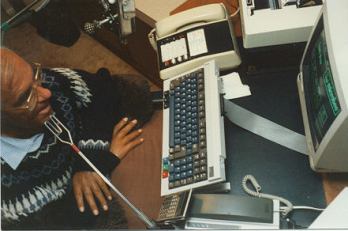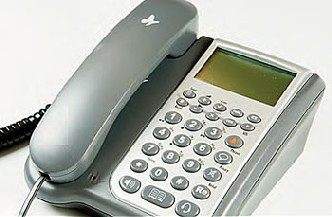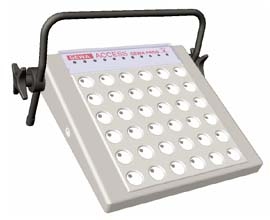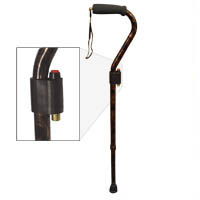Short Description
The Gewa Laser Pointer is specifically designed to be used as an accessing tool for communication. The laser emits a red point of light that is used to point at various objects in the surroundings such as text, symbols, pictures and real objects. It has a reduced output to decrease the likelihood of damaging another person's retina should it be inadvertently directed into the person's eyes
More Details
The GEWA laser pointer has the following features:
*reaches 6 to 7 metres
*Swedish approval for laser class II
*rechargeable battery lasting approximately 8 hours
*yellow button can be used as on/off
*external single switch can be attached for alternate on/off
Supplied with:
*battery charger
*holder for the laser pointer, which can be sewn onto a cap or headband
*control unit
*laser
*a plastic holder for the laser, with 4 holes for attaching it.
Specifications:
*laser power 0.65 Mw
*laser dimensions 54 x 10 mm
*electronics unit dimensions 55 x 95 x 23 mm
*laser class 2 (up to 1mW)
*conditions for use - indoor / dry
*battery charger Mascot Fast Charger 8715
*batteries NiCd 3 x R6 600 mAh
*operating time on full charge - up to 20 hours of continuous use
Factors To Consider
Regular laser pointers can cause damage to the retina if they are projected directly into someone's eye. They are graded as safe for public use as they project a visible light that cannot harm the skin. However, care should be taken not to direct the laser into someone's eyes. The GEWA laser pointer is a Class 2 laser with an output of 0.65mW. The output power has been reduced from 1mW to 0.65mW, meaning that the exposure time has been increased 5 times. (according to standard EN-60825-1-1994).
The GEWA Laser Pointer has an altered output such that in order to damage the retina, the laser beam must be held absolutely still, fixed on one specific spot, and not moved for approximately 4 seconds - which is virtually impossible. This means that the GEWA Laser Pointer has a security time 16 times greater than the regular type of laser pointer used in lectures. This is significant when the person using the laser pointer is wearing it on his or her head and pointing to a communication board or a wall chart. When eye contact is made with a communication partner, the laser pointer may be inadvertently directed into the partner's eyes.
Place Of Manufacture
Sweden
Standards
Some assistive technology needs to meet Australian or other standards. Standards may relate to materials, manufacturing and installation. Products that meet Australian or international standards will have written certification. To find out if a product meets Australian Standards ask the supplier to show you the certificate. For a fact sheet about standards contact us or visit www.ilcaustralia.org/home/standards.asp
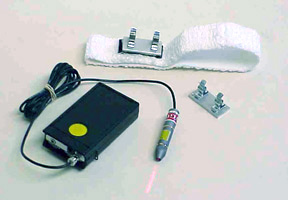




 subscribers
subscribers 



